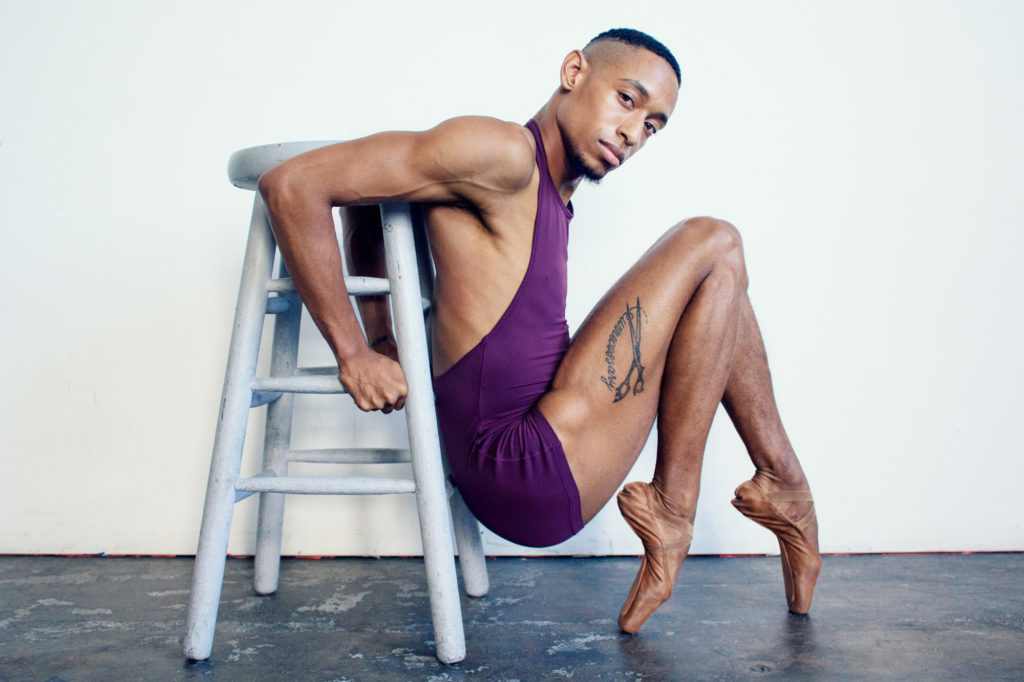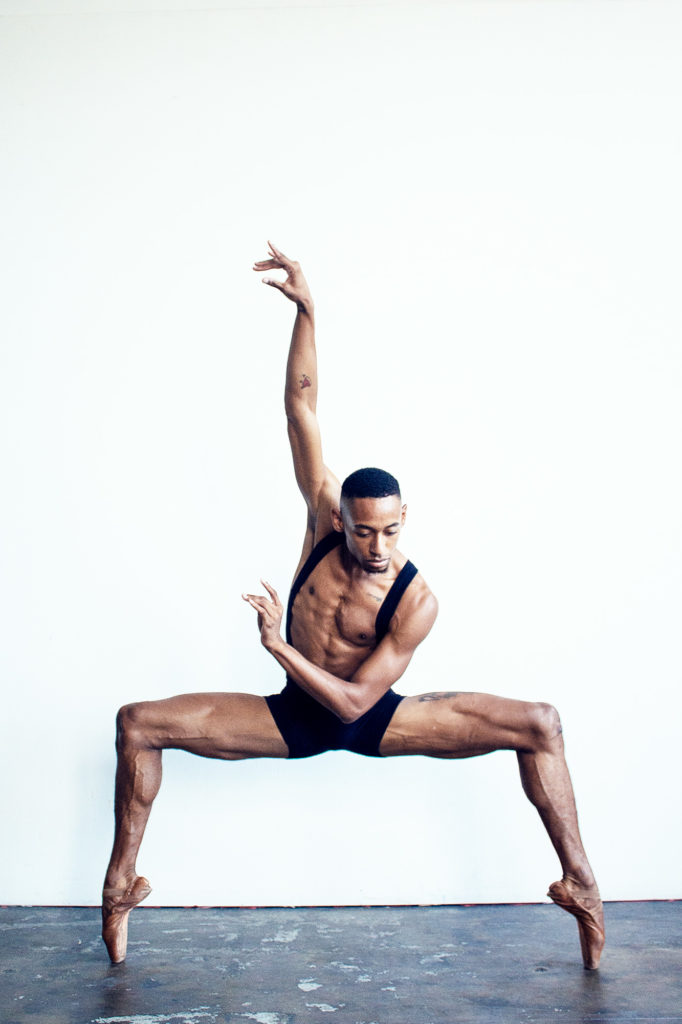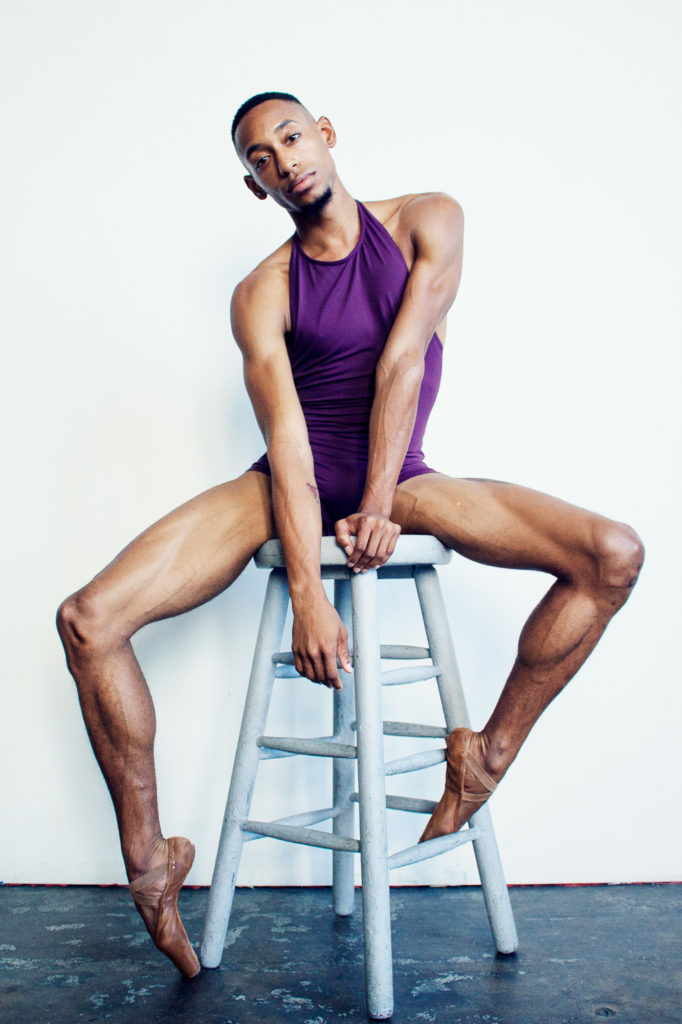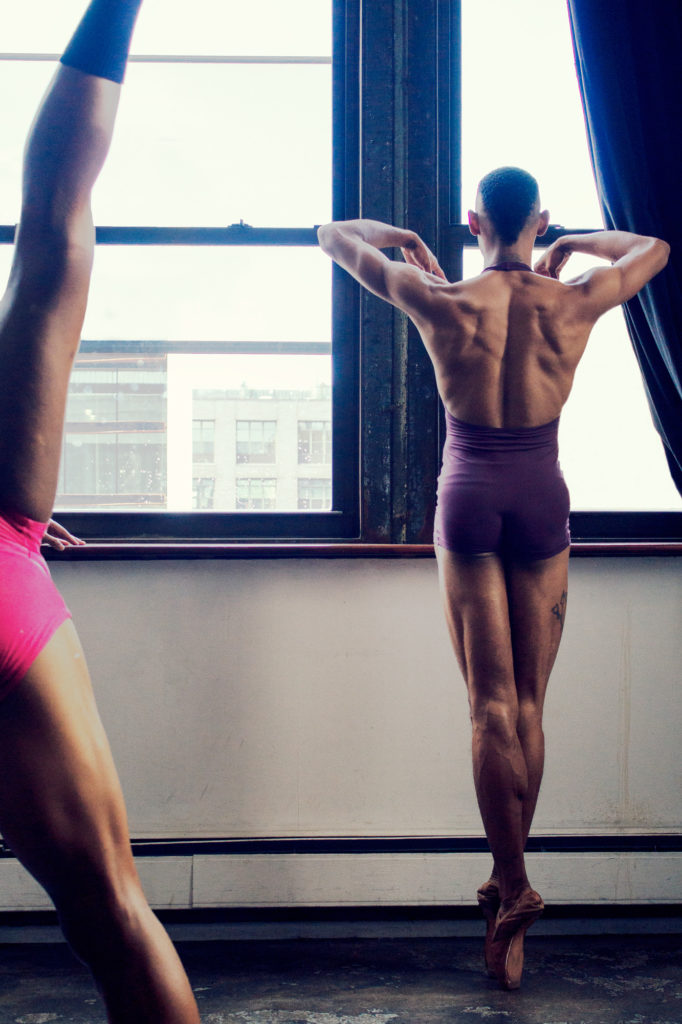Addison is a mid-twenty something California native breaking boundaries in New York City en pointe, literally.
The embodiment of fearlessness in more ways than one, Addison dons the pointe shoe as homage to the power and strength of female dancers but also to push himself and his technical mastery to new heights.
As he explains, “When I first saw the pointe shoe, I was not interested in the use of the ballerina’s arm or head. I would literally be lying on the floor looking at her shoe and how she articulates, how she rolls through, how she turns and stays in one spot. It’s just magical and I wanted to see if I could do that. And then from then on it just became an actual let’s try and understand what the women go through [decision]. It’s made me a better partner and definitely [helped me see dance from] both sides.
Even though Addison is also a member of the prolific, world-renowned Complexions Contemporary Ballet dance company, founded in 1994 by choreography and dance greats, Dwight Rhoden and Desmond Richardson, he’s learned firsthand that, although the company he dances with embraces and encourages his embracing the pointe shoe, all members in the dance community don’t.
In fact, he vividly remembers a fellow male dancer who questioned his dancing en pointe. “He [used] many of the examples of what we’re told and how men are expected to conduct themselves and perform as men as a point of comparison. But even after that experience I wondered, ‘If I’m questioning masculinity, then where along the line is the border between masculinity and femininity?’ I didn’t see doing that as a problem.”
Whether he knows it or not, Addison is an inspiration and embodiment of a change-maker. Not just because he dared to push against a very clear boundary for men in dance but because, in doing so, he’s hoping to create long lasting change for future male and female dancers. “I’m all about breaking barriers and boundaries. So, when people see me dance, I would love for them to realize that anything is possible…
And that I do pointe work not because I want to be a woman but because I love the art of the shoe. It is an appreciation of the discipline women go through–and that’s the art form in general. It is proof that I, too, have the ability to encompass a feminine and a masculine quality in my movement confidently, and the pointe shoe is an extension of that. And that’s why I dance.”
Addison proves that #WhenMenDance boundaries are shattered, releasing us from the shackles of societal expectations, while soaring to new heights in embracing ourselves, unapologetically. The way it should be.

Addison’s Full Story
I dance to individualize myself from everyone. From dancers to artists to the general public. I always want to make sure that I’m known for whatever I’m doing. And I want everybody to know who I am as an individual.
With dancing, you have a choice to be yourself. You are able to express how you feel in the movement quality that you want to do. And you can’t really do that sitting behind a desk. Dance is one of those things where I’m able to artistically fill myself, express myself, and brand myself in a way that is different from everyone those already out there.
The pointe shoe. There’s a discipline–and I’m very keen on discipline–and dedication to something that you want to do [when dancing en pointe]. You can’t just put them on and hope for the best. When you put them on, you know what you have to do.When I first saw the pointe shoe, I literally would not even look at a ballerina’s arm or head. I would literally be lying on the floor looking at her shoe and how she articulates, how she rolls through, how she turns and stays in one spot.
[The pointe show] is just magical and I wanted to see if I could do that. And then from then on it just became an actual let’s try and understand what the women go through. It’s made me a better partner and definitely has given me both sides.
Growing up, I trained at the Debbie Allen Dance Academy, and she’s very much “a man is a man.” That was the old school generation of teachers that let you know what it was: the man is the partner, the woman is the picture. She is what the audience is looking at. So, I definitely grew up with the mindset that men have to be masculine.
So there were times that I’d try to get muscular, get bigger, try to make myself appear more like the general thought of what a man should be. But by the time I got older and moved to New York, my body was still skinny–skin and bones–so it was like, I am just going to have to accept me for me, and whatever I describe myself as a man and what I want to be.
A while back, I encountered I met a person who also trained under Debbie Allen, and he questioned my presentation as a dancer being in pointe shoes. He would use many of the examples of what we’re told and how men are expected to conduct themselves and perform as men as a point of comparison.
But even after that experience I wondered, “If I’m questioning masculinity, then where along the line is the border between masculinity and femininity?” I didn’t see doing that as a problem, but I learned to do so required me to be vulnerable.
Being a man, I am a man because I have something between my legs. It is what it is. I’m that so I can’t change that. I have to use that and then work with that. As the days go by, we’re evolving inside and outside, everything around us is evolving. So being a man and masculinity, that is all evolving as we speak inside me, inside everybody.
Nowadays, everyone has to be able to do everything [in dance]. We have come into a new era where men are no longer expected to just be the partner, just the frame. Men don’t have to just be the stereotypical male dancer or what we’re told that is.
Yes, I have definitely been playing off the idea of masculinity versus femininity within my dance career when I incorporate pointe shoes. That’s the point. Men have feminine qualities and women have masculine qualities. We all use different levels of each. With my dancing I know when to be masculine and when to be feminine, depending on the work.
I’m all about breaking barriers and boundaries. So, when people see me dance, I would love for them to realize that anything is possible. And that I do pointe work not to because I want to be a woman but because I love the art of the shoe. It is an appreciation of the discipline women go through–and that’s the art form in general. It is proof that I, too, have the ability to encompass a feminine and a masculine quality in my movement confidently, and the pointe shoe is an extension of that. And that’s why I dance.


